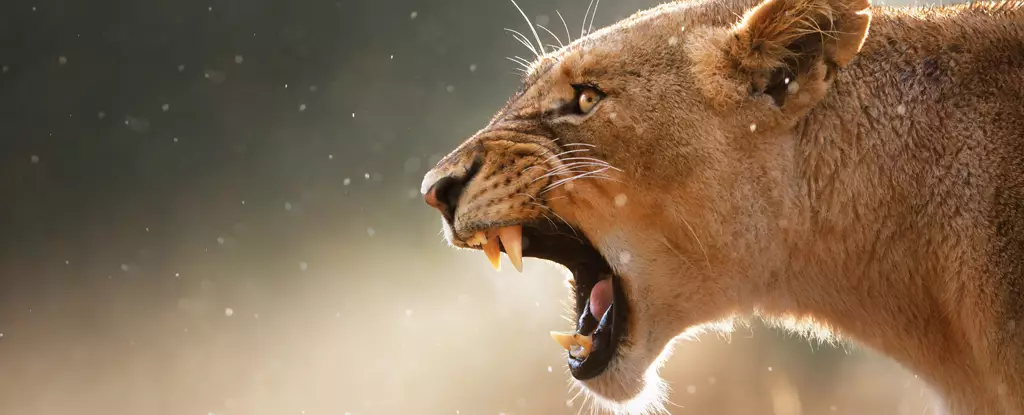When one envisions the apex predators of the African savannah, the majestic lion often comes to mind. With their powerful physiques and social structures, lions epitomize nature’s fierce hunters. However, recent studies reveal a shocking twist in the food chain hierarchy: humans instill more fear in wildlife than even these formidable carnivores. As the primary agents of environmental change and destruction, humans have established themselves as the unseen menace lurking in the wild, a narrative that prompts a deeper exploration of our role within ecosystems.
In a recent study led by conservation biologist Michael Clinchy and his team from Western University, the behavior of various African mammals was documented in response to different sounds. The research aimed to quantify how wildlife reacts to vocalizations associated with lions versus those linked to human activity. Over 10,000 recordings captured on the African savannah indicated a startling trend: 95 percent of the observed species exhibited greater terror towards sounds associated with humans than they did towards the vocalizations of lions.
In the heart of South Africa’s Greater Kruger National Park, the study involved broadcasting human conversation in various local languages, incorporating elements of everyday life, such as hunting sounds, barking dogs, and even casual talks among people. Such a method provided a direct comparison to the more primal sounds of lions—specifically, snarls and growls—as opposed to their alarming roars.
The reactions from wildlife were both telling and disheartening. Out of 19 mammal species observed, most were nearly twice as likely to flee waterholes at the sound of human voices, suggesting that many animals are acutely aware of human threats. Elephants, typically fearless giants, even exhibited aggressive behavior; one charged at the researchers’ equipment upon hearing a lion’s vocalizations, conflating the human presence with a more significant threat.
This stark differential in reactions underscores an alarming realization: for many mammals, the specter of humans far outweighs the tangible dangers posed by lions and other carnivores. While lions may be powerful, humans have catalyzed profound alterations in the savannah’s ecosystems, creating an atmosphere of constant anxiety for the fauna residing there.
The implications of human-induced fear extend beyond immediate flight responses. Such stress can stunt growth, reduce reproductive success, and contribute to dwindling populations of vulnerable species, including those as iconic as giraffes and elephants. The long-term effects on evolutionary biology are profound, leading to changes in behavioral patterns, reproductive strategies, and even population dynamics.
As the study indicated, compounding the problem is the fact that wildlife recognizes humans as the foremost danger. The gradient of fear reflects a learned response intricately linked to mankind’s historical and ongoing intrusion into their habitats—be it through poaching, habitat destruction, or climate change. The cascading effects impact entire ecosystems, with animals adjusting their behaviors in ways that might not be sustainable in the long run.
Thankfully, this research offers a glimmer of hope. By understanding the dynamics of fear existing in wildlife populations, conservationists could potentially exploit this knowledge to enhance protective measures for endangered species. One promising strategy involves artificially creating an ambiance of human presence to deter animals from poaching hotspots, thereby indirectly safeguarding vulnerable populations such as the Southern white rhino.
By utilizing recorded human sounds in areas known for poaching, researchers hope to condition these animals to associate these noises with a threat, thereby keeping them away from high-risk zones. This measure not only emphasizes the importance of human involvement in conservation efforts but also illustrates how behavioral science can provide innovative solutions to complex environmental challenges.
The stark realization that humans are the true apex predators of the modern world compels us to reflect on our impact on the environment. It invites contemplation on how our actions reverberate through ecosystems, inciting fear and altering the behavior of the creatures we share this planet with. As powerful as lions may be, it is our capacity for destruction and change that has instilled a pervasive fear across the savannah. To protect wildlife and their habitats, we must recognize our role as stewards, utilizing our knowledge and technology to mitigate the risks we pose to the natural world, transforming our existing legacy into one that advocates for coexistence and sustainability.


Leave a Reply